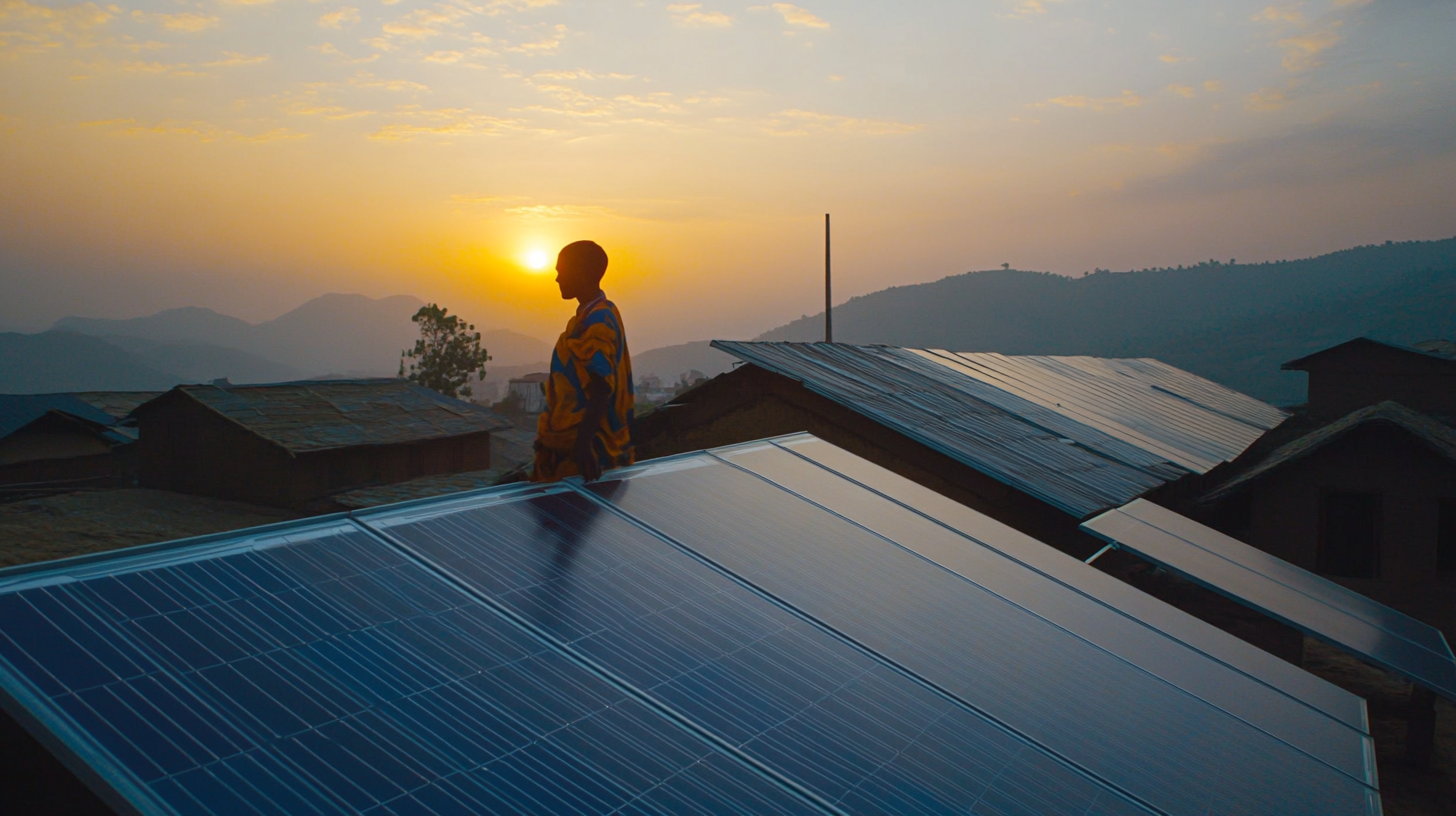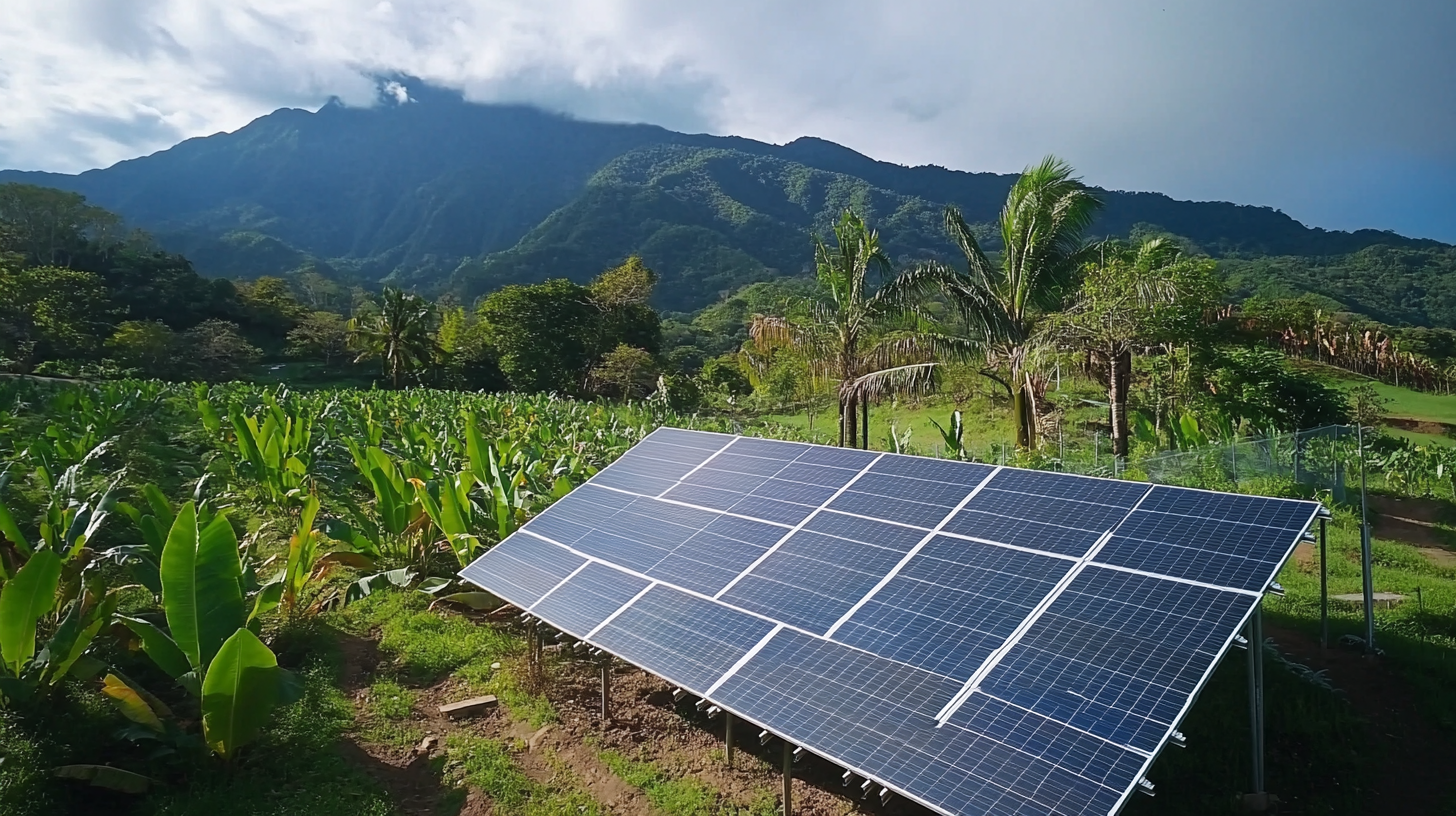Unlocking Sustainable Energy Solutions: The Future of Global Sourcing for Solar Panels
As the global demand for renewable energy intensifies, solar panels emerge as a pivotal solution in the transition towards sustainable energy. According to the International Energy Agency (IEA), solar power could account for nearly 20% of the world's electricity generation by 2040, illustrating its potential to transform the energy landscape. With a growing emphasis on reducing carbon emissions, the solar industry is experiencing unprecedented growth, driven by technological advancements and declining costs. Reports indicate that the global solar panel market is expected to reach a staggering USD 223 billion by 2026, underlining the urgency for innovative sourcing strategies that prioritize sustainability alongside accessibility.
In this evolving context, unlocking sustainable energy solutions through efficient global sourcing for solar panels is not only a market imperative but a moral one. Stakeholders, from manufacturers to consumers, must collaborate to ensure that the materials used in solar panels are sourced responsibly and ethically. According to the Solar Energy Industries Association (SEIA), the U.S. solar market alone has installed over 100 gigawatts of solar capacity, a testament to the industry's resilience and potential for growth. As we navigate the complexities of global supply chains and environmental impacts, the future of solar panels lies not just in technological advancements, but in holistic approaches that marry sustainability with economic viability.

The Growing Demand for Solar Energy in the Global Market
The global market for solar energy has been experiencing remarkable growth, driven by the urgent need for sustainable and clean energy solutions. According to a report by the International Energy Agency (IEA), solar power capacity is expected to surpass 2,800 gigawatts (GW) by 2025, making it one of the fastest-growing energy sources worldwide. This surge is largely attributed to falling costs of solar technology, which have decreased by nearly 90% since 2010, as reported by the International Renewable Energy Agency (IRENA). As governments and businesses alike strive to meet their renewable energy targets, the demand for solar panels is rising exponentially. The Solar Energy Industries Association (SEIA) projects that the U.S. alone will install over 100 GW of solar capacity from 2021 to 2025, which reflects a compound annual growth rate (CAGR) of more than 20%. This trend indicates not only an increasing investment in solar infrastructure but also a pivotal shift in consumer preferences towards greener energy options. Moreover, global sourcing strategies for solar panels are evolving in response to this demand. Companies are diversifying their supply chains to mitigate risks associated with material shortages and geopolitical tensions. Reports highlight that localizing manufacturing processes can increase resilience and reduce carbon footprints, setting a new standard in the solar industry. Organizations are now prioritizing sustainability in their sourcing practices, recognizing that the future of energy relies on not just renewable technologies, but also on the ethical and environmentally responsible acquisition of the materials that power them.

Innovations in Solar Panel Manufacturing and Design
Innovations in solar panel manufacturing and design are transforming the renewable energy landscape, paving the way for more efficient and sustainable energy solutions. As the global demand for clean energy surges, advancements in technology are enabling manufacturers to produce solar panels that are not only more efficient but also more environmentally friendly. The introduction of thin-film solar cells, for example, has revolutionized the market by providing flexible, lightweight alternatives to traditional rigid panels, allowing for versatile installation options that were previously unavailable.
Moreover, the integration of smart technologies into solar panel design is enhancing their functionality and performance. Smart solar panels equipped with sensors and IoT capabilities can optimize energy generation by adjusting to environmental conditions in real-time. These innovations enable better monitoring and management of energy output, ensuring that users harness the maximum potential of their solar installations. Additionally, improvements in manufacturing processes, such as the use of recycled materials and sustainable practices, are significantly reducing the carbon footprint associated with solar panel production.
As we look to the future, these advancements in solar panel manufacturing and design not only promise to increase energy efficiency but also play a crucial role in the global shift towards sustainable energy solutions. The potential for breakthrough technologies, such as bifacial solar panels that capture sunlight from both sides, highlights the ongoing evolution of the solar industry. This continues to attract investment and drive research, ultimately supporting the transition to a cleaner, more sustainable energy future for communities around the globe.

Sustainable Sourcing Practices for Raw Materials
The shift towards sustainable energy sources has put a spotlight on the raw materials that are essential for solar panel production. As we unlock sustainable energy solutions, it is crucial to adopt responsible sourcing practices for materials such as silicon, silver, and copper. According to the International Energy Agency (IEA), solar energy could provide up to 27% of the world's energy needs by 2050. However, the extraction and processing of raw materials must not compromise environmental and social standards.
To ensure a sustainable supply chain, companies are increasingly looking to trace the origins of their raw materials. A recent report from the Global Solar Council highlights that unsustainable mining practices can lead to significant ecological damage and human rights violations. Therefore, sourcing materials from certified suppliers who adhere to environmental regulations and support local communities is imperative. Initiatives like the Responsible Minerals Initiative and Fair Trade certifications are set to play a critical role in encouraging ethical practices in the solar industry.
Furthermore, the move towards circular economy principles is gaining traction. The use of recycled materials in solar panels can reduce dependence on virgin resources and minimize waste. According to a study published in the journal "Nature", implementing recycling processes could meet up to 20% of the raw material demand for solar technology by 2040. This innovative approach not only safeguards the environment but also enhances the resilience of supply chains, ultimately contributing to a more sustainable future for solar energy solutions.

Challenges and Opportunities in Global Supply Chains
In the rapidly evolving landscape of global supply chains, particularly in the solar panel industry, both challenges and opportunities are emerging. As highlighted in recent discussions surrounding the restructuring of international supply chains, collaborative initiatives are crucial. The rise of innovative technologies, such as generative artificial intelligence, emphasizes the need for adaptive strategies that can address these complex dynamics. The UN Conference on Trade and Development recently underscored the importance of cooperation in overcoming supply chain obstacles, demonstrating that there is a shared commitment to forging resilient pathways.
China stands at the forefront of this transformation, offering four significant opportunities for global supply chain collaboration. Recent reports from the China International Supply Chain Promotion Expo illustrate the nation’s dedication to fostering international partnerships that can enhance solar panel sourcing. This dynamic not only propels the efficiency of supply chains but also encourages sustainable practices essential for the solar energy sector. As various stakeholders gather to explore innovative solutions, the formation of research institutions, like the collaboration between Hong Kong University of Science and Technology and Li & Fung, showcases the commitment to developing strategies that mitigate risks while maximizing opportunities.
As countries grapple with shifting economic landscapes and the repercussions of global events, the need for ingenious sourcing solutions in solar energy cannot be overstated. Businesses must navigate the complexities of logistics and localization while remaining agile enough to capitalize on new technological advancements. By embracing a spirit of collaboration and innovation, the industry can unlock a future where sustainability and efficiency go hand in hand.
Future Trends in Solar Energy and Global Collaboration
The global solar energy landscape is witnessing unprecedented transformations, driven by technological advancements and collaborative efforts. As highlighted in the recent Twelfth Annual Global Solar Partners Conference in Chengdu, themed “Unlocking Potentials Together,” industry leaders emphasize the urgent need for synergistic efforts in addressing challenges within the solar sector. Companies like Tongwei and LONGi are taking significant steps towards enhancing global collaboration, advocating for a collective approach to sustainable energy solutions.
The necessity for cooperation is underlined by the current trends observed in the solar energy market. Data from the International Energy Agency suggests that the world saw a staggering growth of over 22% in solar photovoltaic capacity in 2022 alone, illustrating not just an increase in demand but a critical need for innovation in production and distribution practices. The ongoing shift to renewable energy sources, coupled with countries setting ambitious carbon-neutral goals, creates fertile ground for global partnerships in research, technology sharing, and investment.
Moreover, as the solar industry grapples with the complexities of global supply chains, the recent announcements from major players reflect a clear pivot towards sustainable and efficient sourcing practices. Enphase and SolarEdge's restructuring efforts reflect the tumultuous shifts in market dynamics, yet the underlying message remains clear: collaboration across borders is vital for resilience and growth. By pooling resources and expertise, the solar sector can not only enhance its economic viability but also contribute significantly to global energy equity, ensuring that all regions benefit from renewable energy advancements.
In conclusion, the horizon of solar energy is brightened through collaborative frameworks, innovative technologies, and a commitment to sustainability. As we unlock these potentials, the future promises a more interconnected and efficient global energy system, ultimately driving the transition to a cleaner and more sustainable planet.


